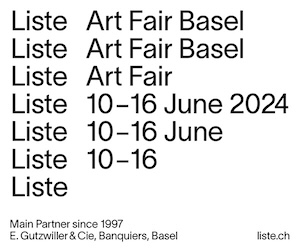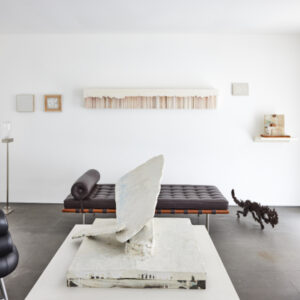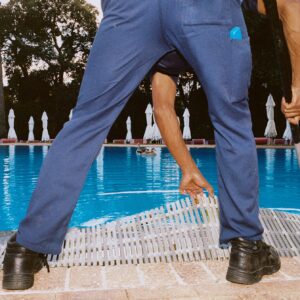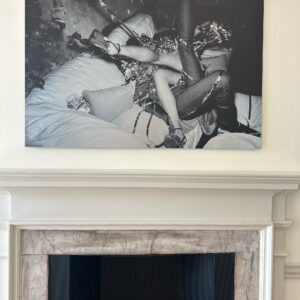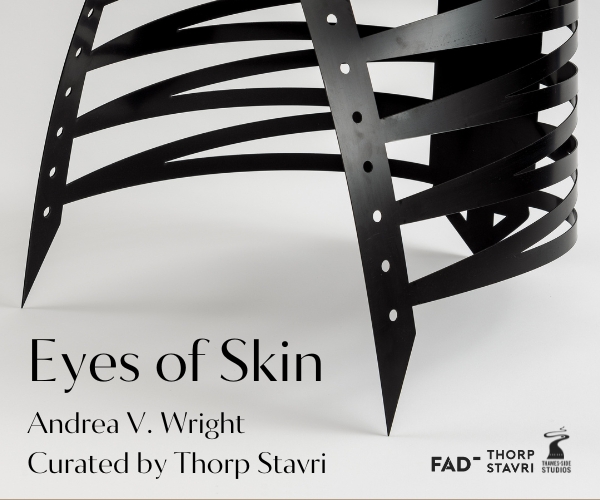After five years in the making (including a 2-year delay thanks to Covid), Cunard’s Queen Anne cruise liner’s inaugural event took place in Southampton.
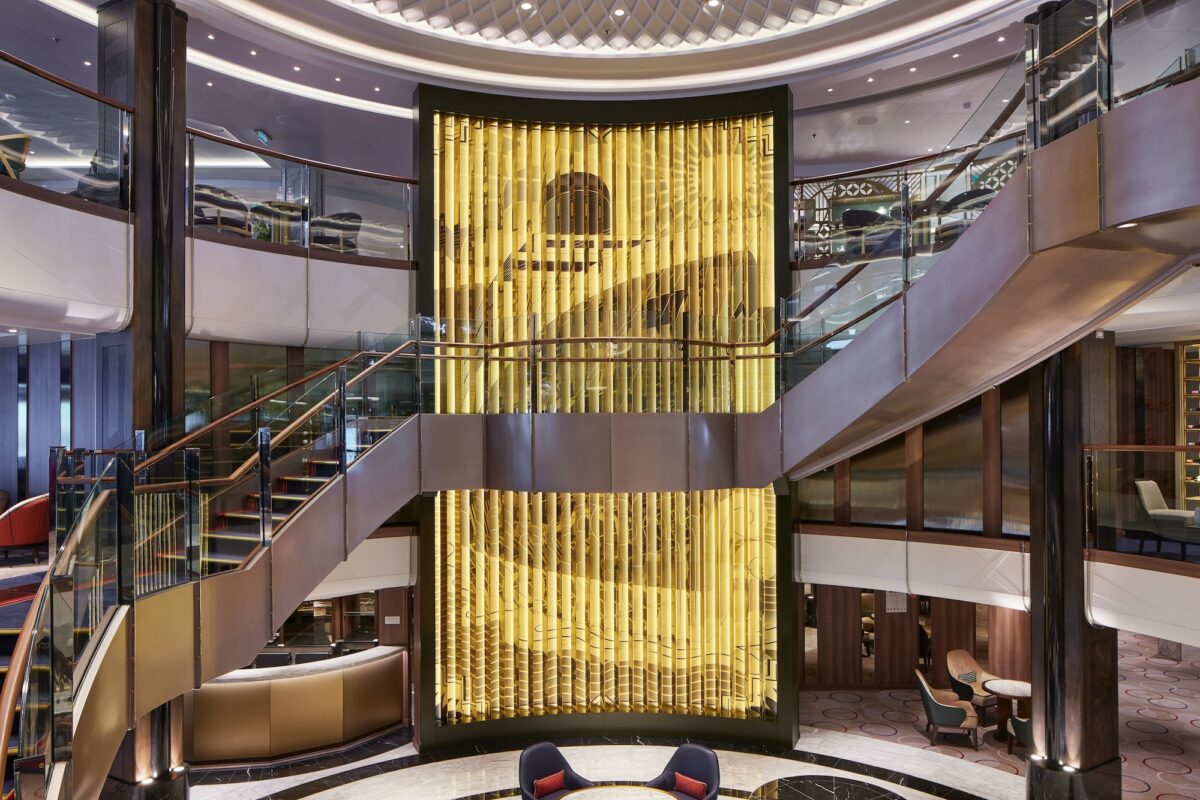
The ship is the newest in Cunard’s fleet, and at 113,000 tonnes, with 14 decks, 3000 guest capacity, and 1,200 staff, it promises to offer a sophisticated level of service, with a refined choice of bars and restaurants, spa, shopping destinations and entertainment on board. But what caught our eye was the fact that Queen Anne is said to feature the largest curated art collection at sea. Sized at a whopping 4,300 original artworks, the collection is a significant part of the experience on board.
For Queen Anne, Cunard enlisted the services of Double Decker, an art curating consultancy specialising in creating collections for the hospitality sector.
The co-directors, Wilhelm Finger and Melita Skamnaki, pride themselves with having been able to inject a new contemporary twist in this colossal body of work, coordinating not only with established artists, but also new and emerging talents. Talent forecasting is one of Double Decker’s talents, and it is apparent in the broad selection on display throughout Queen Anne that this is a special collection.
The art collection is peppered around all spaces of the liner, with signature pieces (Ian Kirkpatrick’s tryptic lenticular panels standing at 4 meters tall in the Grand Lobby to mention one) and interesting stories (such as Genesis, by Sam Shendi, a Memphis-inspired sculpture in the Pavilion, realised with the ship’s first cut steel) aplenty.
One of the areas that Double Decker have completely transformed is what they call ‘The Vertical Galleries’. The galleries are found on the landings in each of the three staircases on Queen Anne, which are sited front, middle and rear of the ship. Traditionally treated in a practical and utilitarian way – a bland, carpeted passage in between decks – these relatively sizeable areas have been transformed across the 14 decks into moments of discovery, with individual artworks now taking centre stage on each landing.
The work is varied and different, and the encounter with the art is surprising and fresh. For each of the three staircases, a selection of graduates from London’s Royal College of Art, Central Saint Martins, and New York’s Parsons New School were handpicked. A total of 32 graduates have been selected and mentored through the process of realising their commissions for Queen Anne, resulting in an eclectic and energetic range of work. The collection, while disparate in medium and approach, has a strong curatorial thread, as all students were given access to the Cunard Archives held at Liverpool University, a treasure trove of histories and heritage references across the over 180 years of the company’s sea travelling.
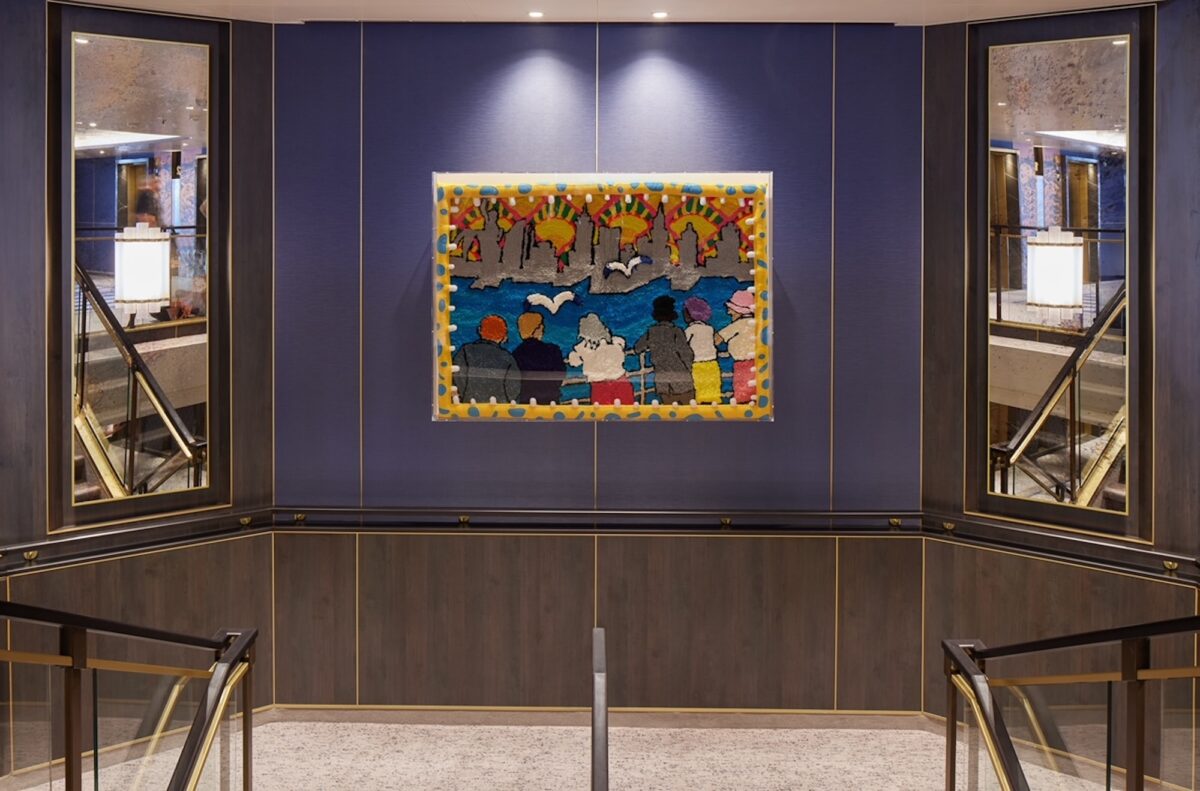
There are 41 artworks as part of these vertical galleries, and of particular note are RCA graduate Gabriel Carucci’s beautifully accomplished mixed media canvases, Carteggio d’Oltremare, in which embroidered geometrical shapes add a three-dimensional quality to the surface, in exquisite compositions. Darkly humorous and unexpected is Mosaic of Memories by Parson’s graduate James Hsieh, who created a vibrant tapestry in sheared tufted yarn and thread, depicting the arrival to New York. Framed by a row of felt teeth, the work shows expectant passengers approaching the big grey city by ship, the city ready to devour them with its mouth wide open, the felt teeth adding a cartoonish, monster-like quality to the work. On Board Perspectives, by CSM graduate Betsy Gater, is a multi-layered work composed with screen printed wooden panels in bright blues and dark reds, in a nod to Cunard’s colours, with a brilliant depth and intricate details that draw the eye in.
‘It doesn’t often happen, to be able to do something like this, with students and young artists. In this type of project, it’s extremely rare that you can say to the client to trust the process and invest in art only based on a portfolio – without renders, without an exact plan of how the art will turn out. Once they were on board with this idea, Cunard has been incredibly supportive, we are so grateful for that,’ said Wilhelm Finger and Melita Skamnaki.
The overarching brief – to create a new luxury experience tailored for today’s discerning travelling guest – is at the core of the interior approach for Queen Anne. Double Decker collaborated with the three interior design practices appointed to deliver the spaces aboard – David Collins Studio, Richmond International, and Sybille de Margerie.
It is interesting to see how the three firms – each with their distinct aesthetic approach – have interpreted the DNA of Cunard in an accomplished way – testament also undoubtedly to Adam D Tihany’s creative direction. Of the three practices, Richmond International were the only one with established expertise working on cruise liners.
Tihany mentioned that he wanted to break away from previous design choices and give Queen Anne’s interiors a shake-up.
‘In my role as artistic director I select the characters who play the main parts. The story starts with one unified vision, but we wanted to challenge people to come and do things that they hadn’t done before,’ he said.
‘Designers had individual spaces and all the spaces had individual identities, but although adjacent, it was important that the spaces felt coherent – transitionally – each space as a different feel and a defined purpose.’
For Double Decker the challenge was to follow the narrative and respond to the spaces while also creating a genuine emotional response in the viewer.
The idea that the art consultants are not just adding decorative elements at a later stage of the design process is reinforced by David Collins Studio’s Design Director Lewis Taylor, who stressed the importance of collaborating from very early on. ‘The art cannot be simply placed on top of the design, it needs to be a journey together from the start,’ he said.
There is a real sense of accomplishment when meandering around the vast spaces of Queen Anne, and while the art collection certainly sits in harmony with the interior design schemes aboard, it is fair to say that it also has a reason d’etre that goes beyond simply being another interior feature.
Words: MBD
Cunard’s Queen Anne begins its maiden voyage in May 2024; cunard.com ; double-decker.org.uk
